Best Tankless Water Heaters For RV Campers
Long hot showers may seem like an impossible luxury if you’re living in an RV, but they don’t have to be. Tankless water heaters are a practical way to get on-demand hot water to your faucets with an unlimited supply.
Tankless water heaters are retrofit and easy to install. They’ll allow you to get unlimited hot water with no recovery time. And you won’t waste propane heating water in a tank that may never get used.
In this article, we’ll recommend our top choices for replacing your current RV water heater and the pros and cons of going tankless.
- Read our related article: RV water system accessories and upgrades
Can be retrofit in place of any existing water heater cut-out opening.
- Maintains water temperature up to 124°F using 42,000 BTUs
- Quiet, Brush-less Motor
- 12V power that operates at less than 3 AMPs for high efficiency.
12,000 BTUs with a 10.2 gallon-per-hour recovery rate. Monitors inlet/outlet water temperature and flow rate to reduce fluctuations. Includes door for seamless exterior integration.
Why Switch To A Tankless Water Heater?
Unlimited hot water: The main reason campers choose a tankless water heater over the standard version is that you get unlimited hot water when you’re at a full-service campground. This is perfect for large families or full-time travelers.
With a tankless water heater, you don’t have to limit your shower time to conserve hot water.
No recovery time: You get on-demand hot water with a tankless heater. That means you don’t have to waste money heating up water in a tank that may never be used. You also don’t have to wait hours in-between each person taking a shower for the water to warm up again.
Pre-set your water temperature: The ability to pre-set your water temperature can be both a pro and a con. Some campers like the convenience of always knowing their water in the shower or sink will be set to their comfort level. However, it can be a hassle if the people in your household prefer different degrees of heat.
Weighs less: When you’re constantly on the move weight makes a difference. Tankless units are lighter than factory-installed water heaters.
- Tankless water heaters are best for full-timers, large families, campers who want to take long showers or use large amounts of on-demand hot water.
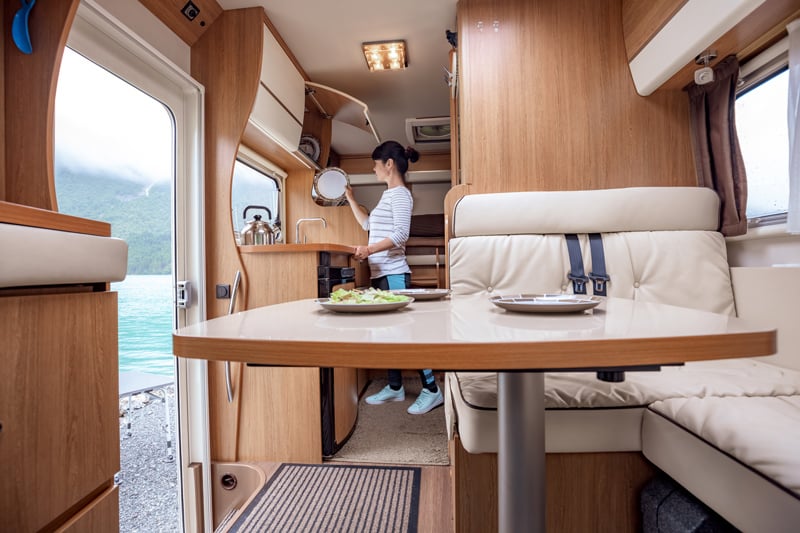
Disadvantages Of Going Tankless
There are a lot of pros when switching to tankless, but they’re not for everyone. A lot of RV campers still prefer to use propane or propane-electric heaters. Here are some of the disadvantages of going tankless:
Delay in getting hot water: By far the biggest disadvantage to on-demand water is the delay in heat being delivered. You can expect a 3-5 second delay before the water gets hot every time you turn on the faucet. Five seconds may not sound like a lot, but when you’re boondocking that is a substantial amount of water being wasted.
Imagine taking a military shower. You turn on the water for a few seconds, rinse, and turn it off. Then soap up and repeat the process. During that time, you’ll either have hardly any hot water, or you’ll be wasting water. Neither of which you want to do off-grid.
For that reason, we do not recommend going tankless if conserving water is important to you.
Uses more propane: When you’re switching from an electric heater to propane, you will be using more fuel! You’ll also be more likely to use hot water because it will be unlimited. We think the benefits outweigh the costs, but it is something to keep in mind.
Pre-set your water temperature: As mentioned earlier, the ability to pre-set your temperature can be either a pro or a con. The control panel will not be right next to the shower, so if you need to frequently change temperatures you’ll need to remember ahead of time to make the adjustment.
Less efficient in certain conditions: Propane heaters do not work as well as electric in low temperatures or high elevations.
Expensive costs: Tankless water heaters can be more expensive up-front than standard RV water heaters.
- We recommend sticking with a tanked heater if you do a lot of boondocking, are on a budget, or go camping infrequently.
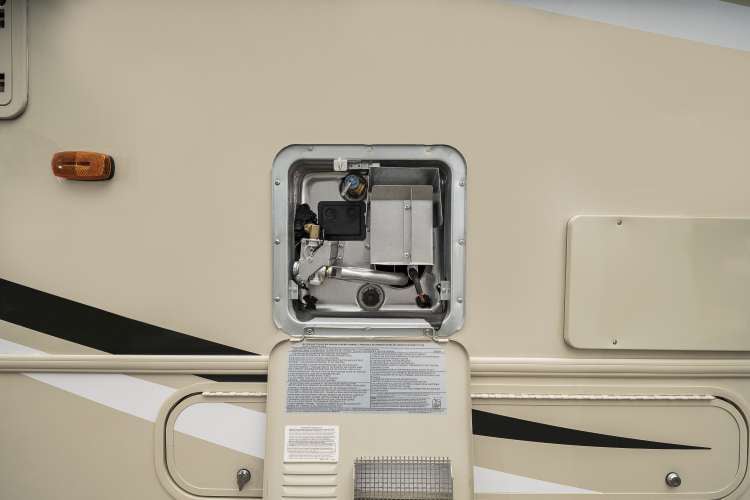
RV Water Heater Brands
The two leading water heater manufacturers are Atwood and Suburban. Both of them also produce tankless water heaters that are made to retrofit existing tanked heaters.
Girard is the third brand that specializes in on-demand water heaters. You cannot go wrong with one of these three.
What Size Water Heater To Get
Most RVs come with a standard 6 gallon or 10 gallon water heater, although some campers can go up to 12 gallons or more. Tankless water heaters are designed to replace the existing units. These are retrofit designs so they can fit in the same cut-out of your existing water heater.
One thing to keep in mind with most on-demand water heaters is that the door is sold separately. You’ll want to measure the length and width of your current camper door so you can order one that fits in place.
How To Install An On-Demand Water Heater In Your Camper
Installation in an RV is relatively straight forward. First, you’ll want to purchase a tankless heater that is the same size as your current hot water heater.
You’ll also need to purchase a door because these are sold separately. Measure the length and width of your outside compartment to make sure you’re getting the right size.
Then it’s time to install!
- Shut off propane, water pressure pump, and electricity.
- Drain the hot water tank by opening the pressure relief valve and drain valve.
- Disconnect the gas line, hot and cold water lines, and electric connections from the old water heater. Take a picture of the existing connections so you remember how to reconnect them later.
- Unscrew and remove the old unit.
- Scrape off and remove the old caulking, then clean off any residue left behind.
- Place new, butyl tape around the opening of the exterior compartment.
- Slide the new, retrofit tankless heater in place.
- Screw on the new door.
- Add a bead of lap sealant around the unit.
- Reconnect the gas line and water lines. If the existing water lines do not line up, you can use flexible PEX tubing to make the connection. Water heater bypass valves are not needed on tankless hot water heaters.
- Install the new heater control panel on the interior of the RV somewhere within reach.
- Reconnect the existing electrical connections.
- Turn on the water pump and LP gas lines to make sure there are no leaks.
- Turn on the power and test your hot water heater.
Troubleshooting Tips:
The most common reason your new water heater will not turn on is if there’s air in the gas line. You can remove the air by turning on the stovetop burner and letting it run for a few seconds.
Another reason the water may not come out hot is if the faucet or showerhead has too low of a flow rate.
You may need to kick-start the water heater by turning faucets on full blast, bleeding air from the water lines, removing any water restrictors, and running just one water appliance at a time.
- If you’re having trouble with plumbing connections, read our article on RV water system accessories and upgrades to find the best available options when it comes to plumbing your camper.
- We’ve also reviewed the best RV lap sealants for leaks and cracks which are helpful for sealing the water heater door.
- This article has a full list of RV hot water heater troubleshooting tips.
What To Look For In An RV Water Heater
Brand
The best tankless water heater brands on the market today are Atwood, Suburban, and Girard. You do not need to get the same brand that is currently in your RV, you just need to get the proper size. All of these models are retrofit and should be compatible with your current camper.
Size
Tankless water heaters are sized to fit in place of your current heater unit. You’ll also need to measure and purchase a new door, which are sold separately.
Flow Rate (GPM)
Flow rate is measured in gallons per minute (GPM). A tankless water heater measures the input flow rate and ignites the burner once a minimum level is reached. One common complaint about hot water heaters is that the flow rate is too low to ignite the burner.
To increase the flow rate:
- Bleed all air from the water lines
- Remove any water flow restrictors in your plumbing
- Use only one water fixture at a time
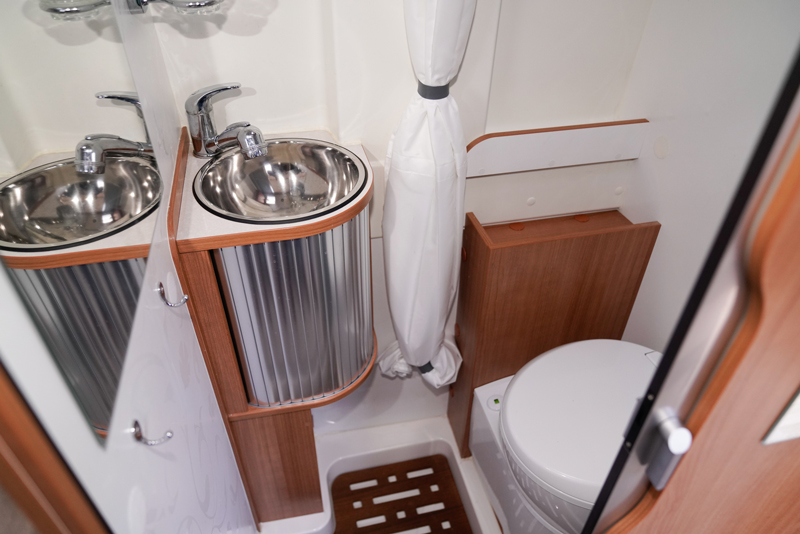
BTU
BTU stands for “British Thermal Unit.” It measures power consumption to individual gas appliances. Think of it as the “horsepower” of the unit. A water heater with a high BTU rating will either heat water faster or to a hotter temperature.
Water Pressure (PSI)
Water pressure is measured in pounds per square inch (PSI). Hot water heaters all need a minimum water pressure to trigger the ignition. In tankless heaters, the flow rate is more important than the PSI.
Frequently Asked Questions
Do tankless hot water heaters run on electric or propane?
Both propane and electricity are required to operate a tankless water heater. RV water heaters use 12 volt DC power.
Why is the water coming out of the faucet colder than the control panel states?
Hot water coming out of the output valve of your heater will be the temperature that you set on the control panel. The water will get slightly cooler as it runs through your RV plumbing. Fixtures that are further away from the heater will be colder than fixtures that are closer to it. Temperatures may vary by a few degrees.
Reviewed: The Best Tankless Water Heater For RV Campers
Can be retrofit in place of any existing water heater cut-out opening.
- Maintains water temperature up to 124°F using 42,000 BTUs
- Quiet, Brush-less Motor
- 12V power that operates at less than 3 AMPs for high efficiency.
Top Choice: Girard 2GWHAM On-Demand Tankless Water Heater
The Girard Group currently makes one of the most popular on-demand water heaters on the market. They were one of the first to start producing these products when they designed their original model in 2009.
The 2GWHAM is their second generation design. It can be retrofit in place of any existing water heater cut-out opening. There are no special gas lines or plumbing required for installation.
What we like most about this heater is the digital control panel. It allows you to set the temperature between 95°F to 124°F and has troubleshooting diagnostics in the event that the burner doesn’t ignite. The Girard 2GWHAM provides 42,000 BTUs and operates on less than 3amps of 12v power so it’s highly efficient for an RV.
Features:
- Maintains water temperature up to 124°F
- 42,000 BTUs
- Quiet, Brush-less Motor
- 12V power that operates at less than 3 AMPs
12,000 BTUs with a 10.2 gallon-per-hour recovery rate. Monitors inlet/outlet water temperature and flow rate to reduce fluctuations. Includes door for seamless exterior integration.
Suburban SW6DE RV Water Heater
Suburban is one of the two primary manufacturers of RV water heaters. Their tankless electric heater is designed as an upgrade to the standard 6 gallon tanked version. You can retrofit the Surburban into nearly any RV.
Their on-demand water heaters have 3-try direct spark ignition and monitor inlet water temperature, water flow rate, and outlet water temperature to eliminate temperature fluctuations.
That’s A Wrap!
If you are a full-time RV camper or have a large family to satisfy, you can’t beat the luxury of an on-demand electric water heater. Each of the models we’ve listed can be used as a replacement for your current tanked heater. Our favorite model is the Girard tankless heater because of its innovation, digital control panel and high heat output.

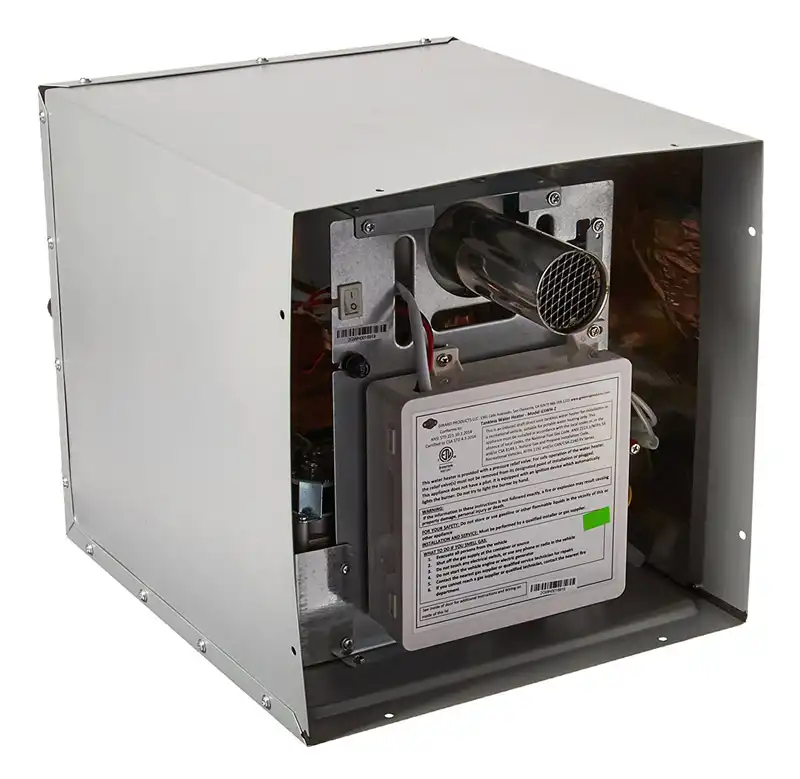
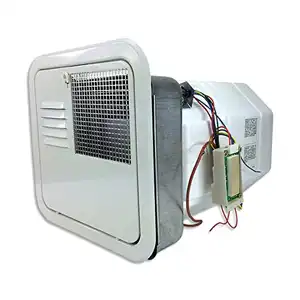
Hello,
Amazing post. I was currently considering getting a new RV tankless water heater, but I was confused as to which should be the best. Thank you for sharing this information with us.
I bought Suburban unit to replace the original gas only unit that came with my 2005 camper. EASY install! EVERYTHING lined up perfectly- gas line, water plumbing, electrical. I had to run an AC line. Rather than go through walls, I wired in the recommended 14gauge via an extension cord. (For now). Most of all the immediate shipping and communication by Drock’s games and More allowed me the time to do the switch prior to our Colorado vacation departure. Customer service with the water heater manufacture (Suburban)was also incredible as I had questions about the gas portion of the heater at higher altitudes and found out about a higher altitude orifice and how to install it. Also added a 140 degree thermostat to make the hot water go further. Both upgrades cost a total of $30.
Keep me updated
Thanks for an amazing article. I now plan on installing a tankless in my Lance 1062 Truck Camper.
Lots of good info here – thank you! I’m wondering though if you have any advice for us who have a sunroom where the current HWH is (making it unusable as it would vent into the room). We must retrofit a tankless on the exterior of the RV and I’m wondering if you have any favorites for this situation. Thank you!
Very informative article about RV. I have Suburban SW6DE which is going smooth and provides hot water immediately. The good thing is that it reduces the temperature fluctuation effects.
A tankless gas heater is better or electric?
Wanting to install a ventless hot water heater-propane.. does anyone make this type?
I’m using GC6AA-10E while comping and its very fanatic in working. It’s built quality really durable.